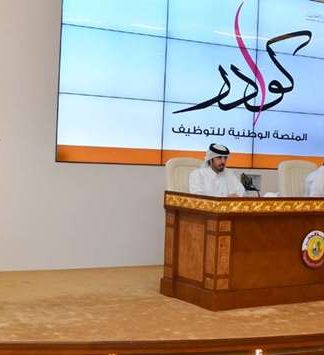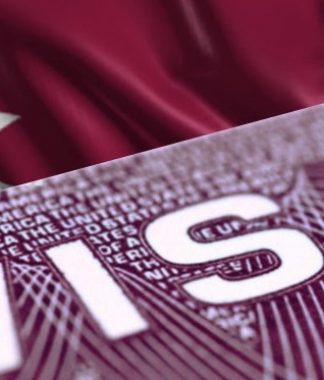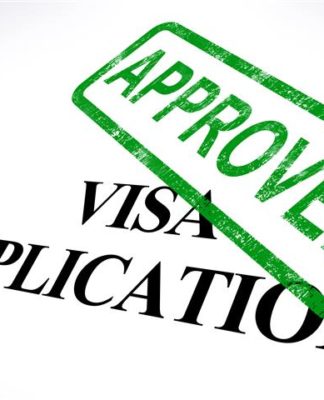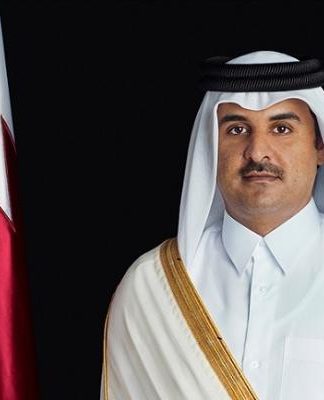Explainer
Israel-Gaza: What is Hamas, why is it in conflict with the Israelis and why has it attacked now?
Hundreds of people have died following Hamas’s surprise attack on Israel on Saturday – the latest in a long line of conflicts between the two.
James Robinson
Sky News reporter @thejournojames
Sunday 8 October 2023 17:56, UK
Listen to this article
0:00 / 9:51
1X
BeyondWords
Audio created using AI assistance
Palestinians wave Hamas and Palestinian (L, bottom) flags during a rally celebrating what they say was a victory by Palestinians in Gaza over Israel following a ceasefire, in the West Bank city of Hebron August 29, 2014.
Image:
Palestinians wave Hamas and Palestinian flags
Why you can trust Sky News
Hamas’s deadly attack on Israel is the latest in a long line of bloody conflicts between two deeply divided political rivals.
Up to 700 Israelis have been killed, according to local reports, in the deadliest attack on the country in decades, while the health ministry said at least 1,590 people had been injured.
Meanwhile, the Palestinian health ministry said on Sunday morning that at least 370 people had died, including 20 children, and nearly were 2,000 wounded in Israel’s retaliatory airstrikes on Gaza, with seven people, including a child, killed by Israeli army fire in the West Bank.
Read more: Follow updates from the Israel-Gaza conflict here
But what is Hamas, why is it in conflict with Israel, and why has its militants decided to launch an attack now?
Smoke rises from an explosion caused by an Israeli airstrike in the Gaza Strip. Pic: AP
Image:
Smoke rises from an explosion caused by an Israeli airstrike in the Gaza Strip. Pic: AP
What is Hamas?
Hamas is the political organisation, led by Ismail Haniyeh, that administers the Gaza Strip.
It was created in 1987 during an uprising against Israel’s occupation of Gaza and the West Bank.
Its name is an acronym of an Arabic phrase that translates as Islamic Resistance Movement.
Palestinian group Hamas' top leader, Ismail Haniyeh meets with Iran's Supreme Leader Ayatollah Ali Khamenei (not pictured), in Tehran, Iran June 21, 2023. Office of the Iranian Supreme Leader/WANA (West Asia News Agency) via REUTERS ATTENTION EDITORS – THIS PICTURE WAS PROVIDED BY A THIRD PARTY
Image:
Palestinian group Hamas’ top leader, Ismail Haniyeh
Hamas or its military wing, the Al Qassam brigades, are designated terrorists by Israel and most Western nations, including the UK, the US, Canada and the entirety of the European Union.
Others, however, see it as the legitimate administration in the territory, including Iran, which is one of the group’s major backers, and the Shia Islamist group Hezbollah in Lebanon.
What is the history of Israel’s conflict with Hamas?
Israel has a long history of enmity with Hamas.
It has gone to war in Gaza four times and has carried out numerous other operations.
Hamas militants have been involved in launching thousands of rockets against Israel and its occupied territory – attacks that have killed and maimed hundreds of Israelis.
Israel and Gaza descend into a day of bloodshed and death as missiles, and militants cross the boarders. Sky's Tom Cheshire takes a step by step look into how events unfolded in the first few hours of what Prime Minister Benjamin Netanyahu says is 'war'.2:51
Play Video – How the Hamas attack unfolded
How the Hamas attack on Israel unfolded.
It also accuses Hamas of kidnapping Israeli citizens and organising protests threatening its borders.
However, Hamas and its supporters accuse Israel of oppressing Palestinians and of committing human rights abuses against them.
What were the beginnings of the conflict?
Hamas, like many groups in the Middle East, remains resentful of the creation of Israel after the Second World War, something promoted largely by Western powers.
Hamas and other Palestinian groups believe that territory was effectively stolen from the rightful owners and occupiers – the Palestinian people.
However, supporters of Israel say the area is the ancestral homeland of the Jewish people, who were exiled following an invasion by the Babylonian Empire more than 2,500 years ago.
Map of Israel and Gaza
Image:
Map of Israel and Gaza
In the decades that followed the creation of Israel, it fought several wars and ended up occupying the West Bank and Gaza – territory the UN had not in 1947 designated it should possess.
While Israel pulled out of Gaza in 2005, it still occupies the West Bank – named so because of its position to the west of the River Jordan.
Israel has established numerous Jewish settlements throughout the territory – which the United Nations Security Council has previously criticised as a “flagrant violation of international law”.
When did they become enemies?
At the time of Hamas’ formation, many Palestinians were angry at what they felt was provocation by Israeli politicians and repression by the security services, and rebelled violently.
Hamas wasn’t the only group rising up – protesters also came from the Palestine Liberation Organisation (PLO) and other groups.
The first uprising came to an end with the Oslo Accords, which spelled out the framework for Palestinian self-governance in the West Bank and Gaza.
Israel ambassador1:47
Play Video – ‘We woke up to a nightmare’
‘We woke up to a nightmare’
A second intifada (uprising) followed in 2000, during which Hamas militants were accused of carrying out suicide attacks and bombings against Israeli and foreign civilians.
Israeli security forces were also accused of rights abuses.
How did Hamas end up in power in Gaza?
After the Oslo Accords, Hamas boycotted the political process until 2005, when it took part in local and legislative elections.
At the time, the Palestinian Territories were being run by President Mahmoud Abbas, and his Fatah party – which had emerged out of the PLO.
Read more:
Analysis: Unprecedented Hamas attack has caused crisis
Opinion: Netanyahu’s power grab is tearing society apart
In 2006, Hamas won more seats on the Legislative Council than Fatah, upsetting those previously in power and members of the international community who had hoped to continue working with Fatah.
A battle broke out, killing hundreds, and Hamas seized power in Gaza. Fatah retained control in the West Bank.
The takeover caused Egypt and Israel to close their land borders and begin a blockade. Hamas’s retaliation led to the first Gaza-Israel war in 2008.
What does Hamas want?
After its foundation, a charter was drawn up which declares that Palestine was endowed to Muslims by God and requires all Muslims to undertake jihad (holy war) on enemies who “usurp” some Islamic lands.
Effectively, Hamas wanted to bring about the end of Israel and the restitution of Palestine of as an Islamic state.
Palestinian fighters from the armed wing of Hamas take part in a military parade to mark the anniversary of the 2014 war with Israel, near the border in the central Gaza Strip, July 19, 2023. REUTERS/Ibraheem Abu Mustafa
Image:
Palestinian fighters, pictured in 2014
Initially, the group flatly rejected a two-state solution – one that involves Israel and the Palestinian people living side by side with mutual recognition.
However, in 2017, it was reported the charter had been reworked, with Hamas accepting that a Palestinian state would fall within borders that existed before Israel’s Six-Day War in 1967.
The group also appeared to remove elements which had been criticised as antisemitic.
Opponents have claimed the changes are cynical moves to appear more acceptable to the international community.
Claims of human rights violations
Hamas has been accused of multiple human rights violations in Gaza, including summary executions, abduction and torture.
They have also been accused by groups, including Amnesty International, of heavily restricting freedom of expression, association and assembly.
Last year, Hamas authorities in Gaza carried out the public execution of five Palestinians accused of espionage for Israel – the first public executions in five years, according to Amnesty.
Hamas have also held Israelis captives, including the highly publicised case of Gilad Shalit, a young soldier who was captured by militants in 2006 and held for five years before his eventual release in a prisoner swap in 2011.
France's President Nicolas Sarkozy (L) places a hand on the shoulder of Gilad Shalit, the Israeli soldier who was released in October 2011 after five years in captivity, on the steps of the Elysee Palace after their meeting in Paris February 8, 2012. REUTERS/Gonzalo Fuentes (FRANCE – Tags: POLITICS MILITARY)
Image:
Gilad Shalit (right) who was detained for five years by Palestinian militants
Charities including the Red Cross criticised Hamas after they were denied access to him during his captivity, while Shalit was also denied the right to speak to his family.
Various media and NGOs have also provided evidence of Hamas firing their rockets or sheltering in densely populated areas – effectively using the inhabitants as human shields.
However, Israel has also faced its own allegations of human rights abuses.
Amnesty has accused Israel of “oppression and domination against the Palestinian people” both in Israel and occupied territories, which it labels a system of “apartheid” – a claim Israel has firmly rejected.
It has also accused Israel of “mass seizures of land and property, unlawful killings and infliction of serious injuries”.
Why another conflict now?
Tensions between Israel and Hamas have been rising this year – one of the deadliest in decades in the region.
Israeli settlers have violently attacked Palestinians at least 700 times in 2023 – the highest number on record, according to the UN’s humanitarian agency (OCHA).
Israel’s far-right government has also announced plans to build 5,000 new buildings in its settlements within the occupied West Bank, while in April police carried out a raid on the al Aqsa mosque – one of the three holiest sites in Islam.
On the other hand, there have been a number of high-profile terror attacks in Israel, including in January, when a Palestinian gunman shot seven people dead near a synagogue on the outskirts of the city on Friday.
Two Palestinian gunmen also killed four Israelis and injured a further four in an attack in the West Bank in June.
Security personnel work at the scene of a suspected Palestinian shooting attack that killed four people near the Jewish settlement of Eli, in the Israeli-occupied West Bank, June 20, 2023. REUTERS/Ammar Awad
Image:
Police at the scene of a shooting in the West Bank in June
Recent diplomatic talks involving the relationship between Israel and Saudi Arabia may also have had an impact.
In recent weeks, the talk has been of peace – with both countries sounding optimistic about the chances of a historic agreement between the two countries.
A deal between Israel and Saudi – a country growing its influence in the region – could pave the way for other neighbouring countries to seal deals with Jerusalem.
And that could provide a potential threat to the influence of Iran – a key ally of Hamas, with whom relations have rarely been better.






























